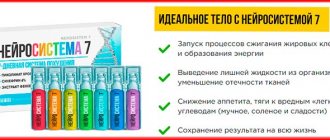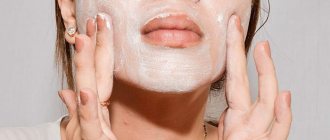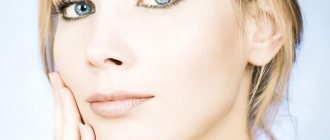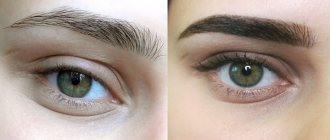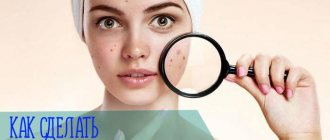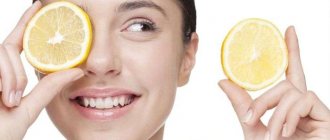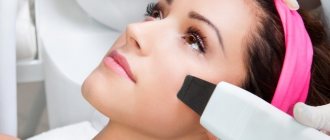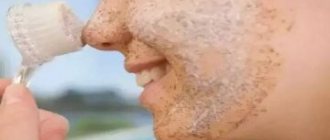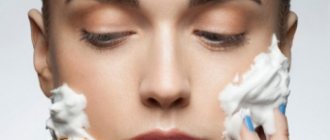About retinoic acid
Vitamin A (retinol) enters the human body from animal products as retinol esters, and is also formed from b-carotene, a plant precursor of this vitamin. In cosmetology and medicine, retinoids are mainly used - synthetic analogues of the vitamin, which have its biological activity. These analogues include retinoic acid (tretinoin).
No retinoid has been studied as thoroughly as this acid for improving skin turgor and smoothing wrinkles.
Retinoic acid is a biologically active form of retinol that can act on nuclear receptors and thus influence the physiological processes occurring in the skin. The acid showed its most pronounced effect in the fight against fine wrinkles, age spots, and uneven skin texture. Moreover, it begins to act faster than retinol, but at the same time has a high irritating potential.
Retinol derivatives such as retinyl acetate (Vit A-acetate) and retinyl palmitate (Vit A-palmitate) have a lower irritating potential. However, these esters have low permeability through the stratum corneum of the skin, while retinoic acid esters penetrate the dermis and have physiological effects.
Numerous clinical studies have been conducted that have shown that retinoic acid is one of the most effective drugs for treating skin with age-related changes, combating photoaging, wrinkles, and age spots. The study found that a cream with a concentration of 0.05% retinoic acid improved the condition of skin with fine and deep wrinkles.
Retinoids have been studied for more than twenty years. It has been proven that regular use of cosmetics with retinoids improves skin structure, reduces the number of wrinkles and age spots. It was concluded that retinoids are in second place in terms of effectiveness in protecting the skin from signs of aging after sunscreens. And we are talking specifically about prescription drugs with retinoic acid.
Retinoic peeling is also called yellow peeling due to the specific color of the composition - the solution is yellow. It is also called so because after the procedure in the beauty salon you will go home with a red-yellow face. And you will have to keep the composition on your face for several hours!
So, what are retina peels done for?
Is retinol peeling and pregnancy compatible?
The answer to this question is clear - no!
- If you are planning a pregnancy or are already in an interesting position, then yellow peeling is strictly contraindicated. Retinoic acid penetrates into the deeper layers of the skin. It has been proven that this type of acid is very similar in structure to steroid hormones and plays an important role in the development of the fetus. Having penetrated the cell membrane, retinoic acid is able to influence the proteins of the cell nucleus and, having interacted with them, begins to be responsible for the expression of genes in the cells of a developing baby.
Differentiation processes disrupted in tissue cells can lead to various types of mutations.
- During pregnancy, a woman's skin protective function is weakened. The yellow peel procedure can cause scars that are difficult to heal, which creates a risk of skin infection.
READ ALSO: Causes of dark circles under the eyes in adults and children, and how to get rid of them?
Effect of acid in yellow peelings
Yellow peels are divided into retinol and retinoic (the latter are acid-based). It is clear that the former are milder in their effects and are easier to control, while acid can give an unpredictable reaction. What are their differences?
Retinol peels are more suitable for rejuvenating mature skin and during the first age-related changes. They can be used even on dry skin as they restore moisture balance and elasticity. Retinoics are stronger and more suitable for oily acne-prone skin.
The group of these peels gives a pronounced effect comparable to the average procedures.
- Retinoic peels are effective for hyperpigmentation. Acid reduces the appearance of persistent pigmentation. To completely remove stains, especially if they are severe, it is necessary to undergo a course of peelings. Acid accelerates the renewal of epidermal cells and activates the loss of pigment during the maturation of new cells. The face after yellow peeling is noticeably better: the spots become lighter after the first procedure, and after the course they can be completely removed. 2. Retinoic facial peeling reduces the depth of wrinkles by stimulating the production of procollagen, which is involved in the formation of collagen. Therefore, the result of yellow peeling is more elastic and dense skin. 3. Retinoic peeling at home and in a salon reduces the roughness of the skin and evens out its surface. 4. Yellow facial peeling reduces sebum production and promotes the “opening” of closed comedones. 5. Has an anti-inflammatory effect, increases the skin’s ability to fight purulent processes. 6. Stimulates the healing process of damaged skin. 7. Affects the structure of the skin, “smoothing” its inner layers. 8. Stimulates the activity of fibroblasts, which helps improve skin elasticity.
What is the difference between retinol and retinoic peels?
Yellow, retinol and retinoic are often used interchangeably. There is a difference between retinoic peeling and retinol peeling, although it is not great. They are similar in compound structure.
Retinol is a true vitamin A, fat-soluble antioxidant. This substance is found in plant and animal sources. In the human body it is synthesized from beta-carotene.
It is retinol that copes with the task of restoring epithelial tissues. It is really used in the fight against acne, inflammation, and psoriasis.
This element is also used as an anti-acne remedy, slows down skin aging, removing wrinkles, fights stretch marks, accelerating collagen production. Like retinol, it is used in the fight against cancer. After using retinoic acid, you may experience dry skin and sensitivity to sunlight. As you can see, the difference between the elements of the composition is small, but it still exists. But both retinol and retinoic peeling will be beneficial to the epidermis.
Yellow peeling – superficial or medium exfoliation
Is yellow facial peeling superficial or medium? What is the difference between retinoic acid and exfoliants such as AHA and BHA?
This acid cannot be called only an exfoliant, since it is multifunctional. AHAs (alpha hydroxy acids), such as glycolic, and BHAs (beta hydroxy acids), such as salicylic, work like traditional exfoliants, targeting the epidermis (the surface layer of the skin) and the inner surface of the pores. They exfoliate and dissolve the surface layers of cells, activate regeneration processes, stimulate collagen production, and eliminate pigmentation.
Retinoic acid, as an acidic form of vitamin A, also has this effect, since it eliminates the processes of keratinization, pigmentation, makes the stratum corneum thinner (this is especially true for mature skin), and stimulates the renewal of the epidermis. In this sense, acid can be classified as an exfoliant.
However, the yellow facial peel does not exfoliate individual dead cells like AHA and BHA, but rather connected groups of such cells. Another important difference is that tretinoin has an intracellular effect, stimulating fibroblasts in the dermis, which is where the production of collagen and elastin occurs.
Thus, yellow facial peeling is not just a superficial exfoliation, but a mid-level procedure.
Medium retinoic peeling affects a deeper layer - the dermis itself, in which new cells are formed.
Therefore, the effect of yellow peeling is not only the removal of the surface layer. Thanks to the effects of retinoids, normal (non-photodamaged) cells are formed. The face after yellow peeling looks younger and refreshed. This is what distinguishes retinol peeling from AHA and BHA, which only affect the epidermis.
Does retinol peeling thin the skin?
Many people are afraid to do retinoic peeling at home or in a beauty salon because they have heard that it thins the skin. This is true, but it does not thin the skin itself, but the superficial stratum corneum. What it is?
This is the outer layer of dead cells that thickens and dehydrates with age, causing the skin to become wrinkled, dull, and unhealthy in color. Therefore, many anti-aging procedures are aimed at removing this damaged “old” layer.
Yellow peeling at home and in a cosmetologist's office thins this layer. This stimulates the thickening of the thick layers, where collagen and elastin are produced. It is these layers that are important for youth, beauty and health of the skin. In addition, yellow peeling stimulates the production of collagen and new cells in the dermis.
What is it - yellow (retinoic) facial peeling
What is retinoic peeling?
This is a method of applying a special product to the skin to cleanse, restore and provide necessary nutrients. The mixture contains retinoic acid, which is an analogue of vitamin A, as well as auxiliary agents: azelaic, phytic, kojic and ascorbic acids. This cosmetic method is a type of chemical peeling, but differs significantly from them. Thanks to the harmonious combination of active ingredients, the main effect occurs on the middle layer of the epidermis. After all, it is he who ensures the regeneration and restoration of cells. In addition, collagen synthesis is activated and microcirculation improves. The surface layer of the epidermis is cleansed from dirt and impurities.
Features of the effects of chemical peeling on the skin
Retinoic peeling has virtually no contraindications. It can be used even by people who have extremely sensitive and thin skin. Under the influence of retinol, reduction-oxidation and metabolic processes in the epidermis are activated, cell division is initiated, and the production of collagen and elastin is stimulated.
The epidermis becomes more elastic and resilient, its hydrolipid mantle is restored, and a lifting effect occurs. Provides intense hydration to all layers of the skin, eliminating dryness and flaking. Getting rid of pigmentation is one of the main effects that occurs after using this cosmetic product. This is due to its unique whitening properties. As a result, the skin becomes smooth, healthy and youthful. You can find out about deep facial peeling here.
In addition, peeling with retinoic acid actively removes dead skin cells from the surface layer of the skin, successfully eliminating keratomas and signs of photoaging. Supports the protective functions of the epidermis, activates its ability to resist various viruses and bacteria, restores the immune properties of the surface layer of the skin, and has an anti-inflammatory effect.
Vascular formations disappear, pores narrow, and the appearance of acne decreases. An additional advantage of yellow peeling is that it has an oncoprotective effect.
Indications and contraindications for use
What is yellow peeling and when should it be done? Regular facial and body skin care will ensure a healthy and radiant appearance. However, over time, the natural processes of aging begin to prevail over the effects of cosmetics. The first signs of aging appear as early as 25 years of age, but for people who regularly take care of their skin, this may be completely unnoticeable. For others, on the contrary, the first signs of skin aging appear more and more every year. You can find out about peeling at home with calcium chloride here.
The video explains what yellow peeling is:
Indications:
- age-related skin changes in the form of photoaging;
- insufficient collagen production;
- dry skin, the appearance of fine wrinkles;
- withering, decreased firmness and elasticity;
- hyperpigmentation;
- hyperkeratosis;
- acne, post-acne.
Despite the fact that retinoic peeling provides a gentle effect on the epidermis, there are certain contraindications to its use. First of all, this is the period of pregnancy and breastfeeding. The presence of allergic reactions to one of the components used during peeling. Exacerbation of herpes virus infection. Fungal and infectious-inflammatory diseases of the skin in the affected area, as well as cuts, abrasions and other damage to the integrity of the skin. Contraindications include the presence of severe diseases of internal organs in the stage of subcompensation and decompensation, as well as taking medications that contain vitamin A.
Indications for use
- Yellow peeling is indicated as an anti-aging procedure for the first age-related changes: loss of tone, the appearance of wrinkles and folds, decreased elasticity and firmness of the facial skin. If you have started anti-aging skin care, it makes sense to consult with a cosmetologist about this procedure.
- Yellow facial peeling is one of the most effective for hyperkeratosis - thickening of the stratum corneum. As a rule, this is characteristic of mature skin.
- Photoaging and pigmentation after sun exposure are also indications for yellow retinol peeling.
- Hyperpigmentation is an increased manifestation of pigment. After retinoic peeling (a course of procedures is required), even stubborn spots are eliminated.
- Acne, uneven relief.
Since this is a chemical peel, there are contraindications. A fairly impressive list of contraindications is one of the significant disadvantages of retinol peeling.
How yellow peeling affects the skin
Many patients love yellow peeling because immediately after the procedure, the skin acquires a color like after tanning. This is followed by two days of active peeling, then a pink, fresh complexion and completely smooth skin are left. Spots, scars, post-acne, pores become less noticeable after peeling. The synthesis of collagen and elastin is activated. Small facial wrinkles disappear, the severity of deeper age wrinkles decreases.
Indications for use of yellow facial peeling
- Correction of fine and deep wrinkles.
- Prevention of age-related changes.
- Photoaging.
- Hyperpigmentation.
- Acne (possibly).
- Post-acne.
Contraindications to the use of yellow facial peeling
- Pregnancy and lactation.
- Liver failure.
- Taking systemic retinoids (isotretinoin).
- Exacerbation of Herpessymplex and other dermatoses.
- Sensitive skin.
- Tendency to hyperpigmentation.
- Inflammatory elements at the peeling site.
- Rosacea.
- External use of adapalene and other retinol derivatives to avoid hyperreaction.
- Individual intolerance to components.
Take precautions!
Cosmetics with retinol and yellow peeling at home should be used with caution if you have very sensitive skin with pronounced areas of redness. It is also advisable to reduce the intake of vitamin A orally during the period of peeling.
Important: remember that you need to do yellow peeling during the period of least solar activity.
If you are planning to do a retinoic peeling course, then start at the end of October and finish in March - during this time you will have time to complete 3-6 procedures.
STEP-BY-STEP INSTRUCTION
A retinoic exfoliant will have a more noticeable effect if all the rules of preparation and care after exfoliation are followed.
Before you do yellow peeling at home, it’s worth setting aside time in your schedule - the course lasts for a month, so many people prefer to cleanse while on vacation.
Preparatory stage
Two weeks before the session, you should stop using exfoliating products.
The basis of care during this period should be weakly concentrated exfoliants with glycolic acid - they soften the stratum corneum of the epidermis and enhance the effect of retinoic acid.
General application rules
- The peeling mass should be applied to a thoroughly cleansed and oil-free face.
- The session begins with the application of a solution of glycolic acid, then a product based on retinoic acid.
- The retinoic mask is kept on the face for no more than 45 minutes - the duration depends on the condition of the skin and the desired effect.
- If the goal is to combat age spots, lightly rubbing a retinoic exfoliant into individual areas using cotton swabs is acceptable.
- The area around the eyes should be avoided and acid should not come into contact with the eyes and mouth. Otherwise, rinse eyes with plenty of water and consult a doctor immediately.
Final stage
Acids must be neutralized with a mixture of one teaspoon of baking soda and a tablespoon of water. After this, the mask is left for another 7-8 hours and then washed off with warm water.
After a retinoic mask, the skin acquires a yellowish tint and seems “tight” and dry. Therefore, you need to apply a thick layer of moisturizer to your face, suitable for the specific type of epidermis.
The neutralizing composition may cause a slight tingling or burning sensation. If the sensation causes severe discomfort, you should immediately wash off all products and consult a dermatologist.
Recovery stage
After retinoic exfoliation, the skin begins to peel, redness and swelling are also possible. At this stage, you should not use scrubs or try to speed up the process: this will take even longer to heal.
During the period of active peeling, you should not use decorative cosmetics.
During this period, water balance is important for the epidermis, so it is necessary to regularly apply moisturizing cosmetics and spray your face with thermal water. Be sure to use sunscreen with SPF40+.
What happens after the procedure
As we have already said, the procedure gives an effect comparable to the average effect. Therefore, after retinoic peeling there will be redness, a feeling of dryness of the face, itching, swelling, and the temperature may even rise. This condition can be observed for 3 days, severe peeling will last on average 4-8 days.
A specific feature of the procedure: after retinoic peeling, you will notice that all the impurities and blackheads sitting in the pores will come to the surface. This is due to the fact that the procedure removes the top layer of the epidermis, revealing all these impurities.
Therefore, if you notice that there are more clogged pores on your face, do not rush to quit the course - it is better to sign up for facial cleansing when the peeling goes away.
Yellow peeling as a procedure for rapid rejuvenation and treatment of acne is suitable for both men and women.
Effect of the procedure
This type of peeling is considered quite delicate, since the acid, when interacting with the skin, does not disrupt its structure or damage it. The result after the procedure usually exceeds all expectations. If the skin on your face looked quite good, then after the first session you can see a positive effect.
The results will surprise you:
- skin structure improves;
- the relief is leveled;
- the skin becomes more youthful;
- freckles and age spots are whitened;
- the process of aging and withering of the skin slows down;
- This peeling has a powerful antioxidant effect.
Read also: Features of the gas-liquid peeling procedure
To obtain a lasting result and in the presence of serious skin problems, it is necessary to undergo a course of procedures.
Pre-peeling preparation
Many people cannot do yellow peeling because it causes pain: some people feel as if their face is on fire. Indeed, the procedure can be painful, so it is better to undergo pre-peel preparation.
The yellow peeling procedure will be more comfortable and less painful if before the course you prepare the skin with almond or glycolic peels - they are softer and more gentle. Another option is to use cosmetics for three weeks, such as creams with retinoic acid, or preparations with AHA acids, which weaken the intercellular bonds in the epidermis.
Procedure at home
A question that interests many: is it possible to do retinoic peeling at home? The peeling we are discussing is classified as medium. In addition, acid can give an unpredictable reaction, so it is better to carry out the procedure not at home, but under the supervision of a cosmetologist.
Since retinol peeling has contraindications, the doctor at the first consultation examines the skin, notes its type, the presence of inflammation, pigmentation, and signs of photoaging. The cosmetologist collects all the necessary data: whether the patient has ever taken medications with retinol, what reaction was observed, how sensitive the skin is, how often allergic reactions occur. Afterwards, a decision is made on whether peeling with retinol can be done.
Therefore, retinoic peeling at home is not recommended. If you have already done this procedure and know how your skin reacts to it, then Medvyan’s home care magazine will show you the recipe.
Procedure technique
The procedure includes preparatory activities, the peeling itself and post-peel care.
Preparation
A dermatocosmetologist conducts a full examination of the skin: determining its type and condition, identifying signs of photoaging and disorders of pigmentation processes, the presence of scars, and inflammatory processes. The patient's daily exposure to sunlight is determined.
When collecting anamnesis, special attention is paid to the following points:
- Did the patient take retinol preparations, how long ago and for how long, what effect was observed;
- What previous diseases were suffered;
- Has the patient previously had inflammatory and allergic skin diseases?
The presence of allergic reactions or atopic skin inflammation indicates increased skin sensitivity. In this case, during retinoic peeling, the principle of gradualness and moderation is adhered to, namely, the use of small doses of products and a shortened exposure time.
All data is entered into the patient’s card, where photographs are added that record the condition of the skin before the procedure.
For several weeks before the peeling session, experts recommend using creams with glycolic acid. You should refrain from using scrubs and visiting a solarium during this period.
Procedure
Application of retinoic composition
The duration of one session is about 3 hours. First, a composition with salicylic and glycolic acids is applied to the skin to cleanse and prepare the skin directly for peeling, which can proceed in one of two ways depending on the concentration of the active substance in the peeling composition.
Option 1. The composition is applied up to 3 times - depending on the type and condition of the skin. In addition to retinoic acid, peeling compositions include excipients - azelaic, phytic and ascorbic acids. At the moment when the skin begins to redden, the procedure is completed - a facial care product is applied after peeling.
Option 2. The product is evenly applied to the skin, including the area of the upper and lower eyelids along the ciliary edge. The eyelash and eyebrow areas should not be affected.
If the peeling mask contains depigmenting components, then the product should not be applied to the eyelids.
After 10–25 minutes, the mask hardens and turns into a film. The film is washed off or removed after 10–12 hours at home; the skin cannot be treated with anything else until the next day.
The concentration of the active substance and the duration of the procedure are calculated individually for each specific patient.
The standard course is designed for 3–5 procedures with an interval of 3–6 weeks, depending on the condition of the skin and the severity of the problem. Then maintenance sessions can be held every three months.
Recovery
The retinoic peeling procedure belongs to the clinical methods, and the drugs used belong to the class of medications. This is a fairly serious procedure that requires the implementation of certain rules and compliance with all recommendations for care during the recovery period, and the mandatory use of post-peeling products.
After the procedure, it is important to comply with the following requirements:
- You cannot use cosmetics containing retinoids and ANAs for 14 days after the procedure;
- You should refrain from other cosmetology sessions and chemical procedures, including permanent hair curling or dyeing;
- To relieve swelling and irritation, as well as to eliminate pain, anti-inflammatory drugs and regenerating drugs are recommended;
- The use of cleansing products that do not contain harsh surfactants is allowed on the second day after the procedure;
- All cleansers and skin care products should be water or gel based, but not fat based;
- Constant moisturizing of the skin and the use of sunscreen are recommended.
The recovery period can last from 5 to 10 days. After the procedure, there is severe redness of the skin, which goes away after 2–4 days, and slight swelling. There may be a feeling of skin tightness, itching and burning. 2-3 days after the procedure, severe peeling of the skin begins - peeling off of the cells of the upper layer of skin, which can last from 2 to 5 days.
Peeling
As already mentioned, the basis of this radical cleansing is the natural effect of retinoic acid (one of the forms of vitamin A). And its indications for cosmetic use are extensive:
- acne of various localizations;
- age spots;
- removal of small stretch marks that form wrinkles.
The active component of such a peel can be purchased - absolutely without difficulty - at a regular pharmacy. But for effective use, retinoic acid should be mixed with pharmaceutical salicylic acid (formula 1:1). This combination is indicated for increased oily skin and acne.
We get a yellow mask, as shown in the photo.
Lightly blot the skin with the freshly prepared solution (using a special cosmetic brush). Leave for 20 minutes - the mixture should reach (dry) to a thin film. And it (this film) will need to be “detained” on the face for 7 (!!!) hours.
Attention: the yellow mass can burn, depending on your pain threshold, the pain may be severe.
After the allotted time, wash off the composition from your face. You can purchase a special soothing cream after peeling, and also lubricate your skin with panthenol.
On the second day after the procedure, intense peeling may begin, but it usually begins on the third day. Do not peel off the peelings under any circumstances, otherwise you will damage the skin! Intense peeling usually lasts from 3 to 8 days after the procedure.
Tip: to speed up the healing of the skin, you can lubricate it daily with creams containing panthenol. If you go outside during the day, be sure to use a cream with SPF protection.
The standard peeling course is 4 procedures with an interval of 1 month.
After this peeling procedure, there is no need to use preparations (cosmetic) containing vitamin A for 2 weeks.
How is yellow retinol peel done?
The retinol peeling procedure does not require any special preparation of the skin. The recipe is simple: retinol is applied to the face for 7-8 hours. After this, the product must be rinsed off with warm water. The person does not experience any discomfort (especially painful), except for the fact that he wears a yellow mask for half a day. Five days after the procedure, the exfoliation process begins, which lasts three days.
To speed up the healing process and enhance the desired effect, it is imperative to use professional cosmetics. As for the time spent on the entire process and the required number of procedures, it all depends on the individual characteristics of your body. In many cases, one procedure will be enough, but for the best result you need to do this peeling three times with a month between procedures.
How to make yellow peeling
